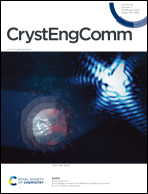Band gap modulation of organic–inorganic Sb(iii) halide by molecular design†
Abstract
Organic–inorganic hybrid materials show structural diversity and flexibility. The introduction of Sb(III) metal ions into the inorganic parts of these materials can endow them with semiconductor properties. In the work described in this paper, we successfully adjusted the band gap of such a material, namely of (C10H16N)3SB2CL9, from 2.933 eV to 2.788 eV via substituting a halogen for the third hydrogen atom of the benzene ring in its organic cation. This change in the band gap may have been caused by the influence of organic cations on the anions that gradually reduced the Cl–Sb–Cl bond angle. It is hoped that this research can provide inspiration for the design of tunable bandgap semiconductor materials.



 Please wait while we load your content...
Please wait while we load your content...